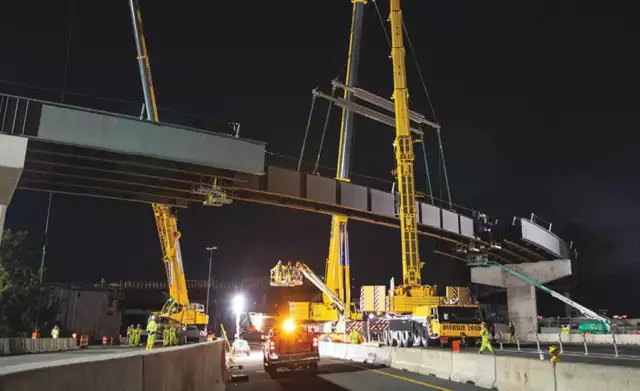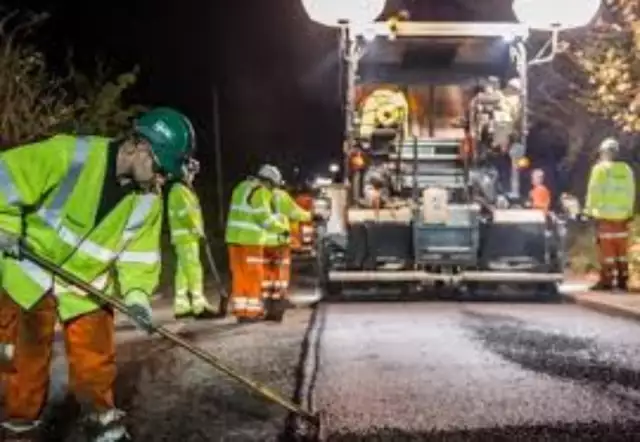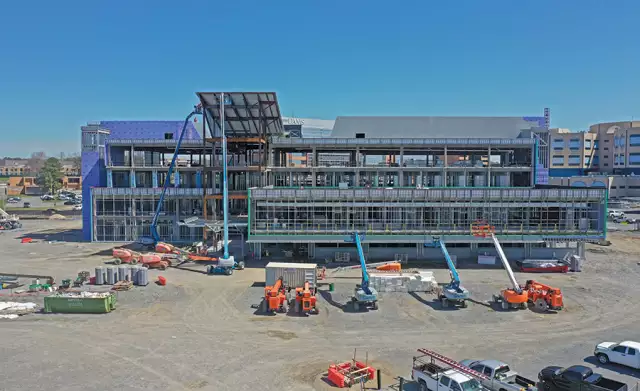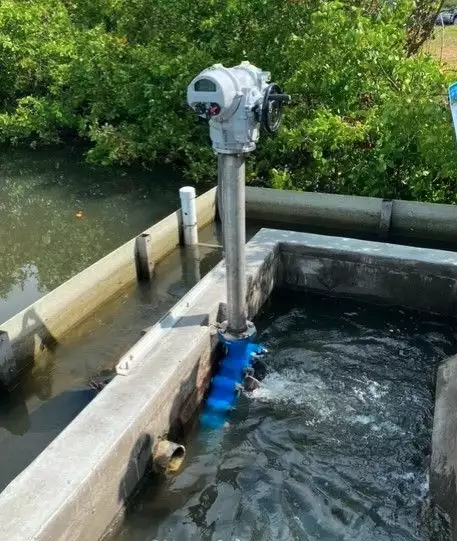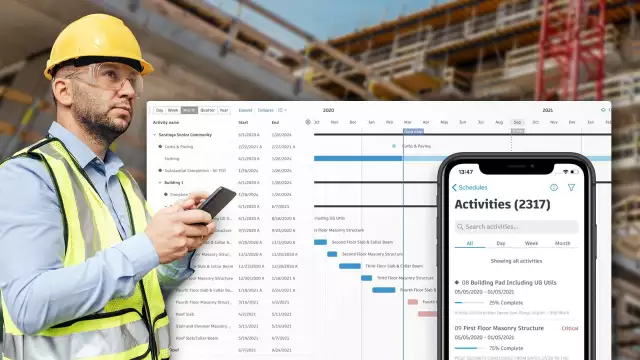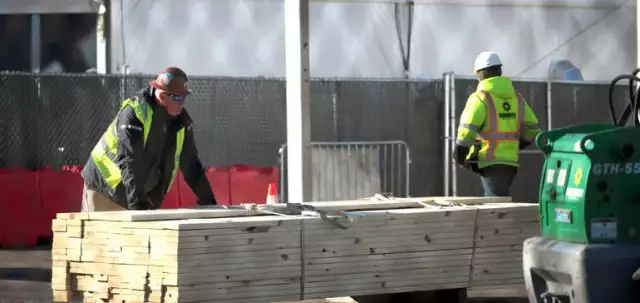Public-Private-Partnerships Help Fast-Track Transportation Mega-Projects Across the United States
Public-Private-Partnerships Help Fast-Track Transportation Mega-Projects Across the United States
May 17, 2022 Order Reprints No Comments .contentprovided{ float: right; margin: 0 0 10px 10px; width: 200px; } @media only screen and (max-width: 500px) { .contentprovided { float: none; margin: 20px auto 20px auto; } } .cap { font-size: .85em; font-family: ariel, helvetica, sans-serif; text-align: center; margin-top: 0px; margin-bottom: 35px; color: #595959; }
Private industry has often been the driver of innovation in America, and innovative companies have helped propel societies and economies forward. Samuel Morse’s invention of the telegraph and Henry Ford’s invention of the assembly line are just two examples of the revolutionary impact of innovative ideas that transformed society and the economy.

However, almost all innovations require infrastructure to deliver societal benefits. In the case of automobiles, government recognized the role it plays in driving advancement through the passage of The Federal Aid Road Act of 1916, the Federal Aid Highway Program of 1919, and the Interstate Highway Act of 1956. All three pieces of legislation accelerated the adoption of these transforming innovations.
Yet 100 years later, infrastructure has suffered from decades of inadequate funding. Even with infrastructure spending at levels not seen since the birth of the federal highway system in the 1950s, the American Society of Civil Engineers estimates that 40% of the nation’s highway system is in poor or mediocre condition, earning America a “D” on the Society’s annual report card for roads.
There is a proven method to deliver transportation mega-projects without using government funds or resources that is greatly underutilized in the United States today. While Europe, Canada and other parts of the world have all embraced using private dollars to supplement their public transportation systems, many states have been slow to take advantage of this proven, innovative method. Public-Private Partnerships (P3s) are best suited to meet the many challenges of large-scale and complex projects. P3s shift management of the funding, design, construction and ongoing operations and maintenance of the road project from the public entity to the private concessionaire.
Many of these mega-projects are partly or fully self-financed without use of taxpayer funds for construction, and they add hundreds of millions of dollars of economic stimulus during development. P3s have allowed many large projects to progress rapidly, being designed and built years faster than traditional design-bid-build methods.
Since entering North America 15 years ago, Cintra, one of the world’s largest developers of private transportation infrastructure and a subsidiary of Ferrovial, has built or is in the process of building eight P3-funded mega-projects, including North Tarrant Express (NTE) in North Texas and the I-66 Outside the Beltway project in Northern Virginia. I-66 was built with no state subsidy at no cost to the Commonwealth taxpayer.
Creating Value for the Client
With P3 mega-projects, private developers partner with government entities to help solve their most complex and time-sensitive transportation challenges at vastly reduced public costs and timelines.
On the I-66 project, transportation planners anticipated needing $600 million in government funding. Cintra’s innovative proposal not only did not require the $600 million but delivered to the State an additional $579 million as an upfront payment that is being used by the DOT to address other pressing transportation needs in the region, which when combined with the I-66 project will result in a more efficient transportation corridor that will serve the area’s needs well into the future. Some of these projects have included road and bridge widenings, expansion of rail and transit service and additional multi-modal bicycle-pedestrian facilities.
In announcing the contract award in 2016, then Virginia Governor said, “This deal that we have negotiated today clearly is one of the best deals ever done in the country, not a cent of taxpayer money will be used and now, as we have freed this money up it will benefit all of the citizens of the great Commonwealth of Virginia.”
The concession company typically takes responsibility for the operation and maintenance of the entire corridor, including the upgraded non-tolled general-purpose lanes for the duration of the contract. In the case of the NTE project in Texas, it will save the state an estimated $800 million over the life of the 52-year contract.
Accelerating Solutions
With P3 design-build mega-projects, an advantage is vertical integration of the team – designers, contractors and subcontractors. This allows work to start quickly while the designs are still being developed for other sections of the project, all the while, local and regional firms are utilized during the design and construction phases of the project.
“The private sector is much nimbler from start to finish, particularly in the construction phase,” said Alberto Gonzalez, CEO of Cintra US. “Our engineers drive decisions throughout the process and can identify a problem, identify a solution and implement in the field in days what traditionally would take a general contractor several weeks or months to solve working with a DOT client. We take on that risk but at the same time there are many incentives for the project to be completed on time.”
For the I-66 project, groundbreaking took place in 2017 and construction began in 2018. By 2021, the project had reached approximately $70 million in monthly production with construction activity across the entire 22-mile span of the project, which is on schedule for completion in late 2022. Several early milestones have already been achieved on the project.

Cintra is future-proofing its P3 assets to prepare for the connected and autonomous vehicles of the future. To learn more about AIVIA Orchestrated Connected Corridors, visit Cintra’s AIVIA Smart Roads Solution.Image: Cintra US
In addition to the infrastructure benefits these mega-projects provide, P3 projects generate significant local job creation, economic development opportunities and financial benefits. For example, the NTE and LBJ Express projects in Texas hired more than 2,000 local firms, executing more than $600 million in Disadvantaged Business Enterprises (DBE) contracts. These projects both stimulated the local economy and provided the traveling public with designs that reduce accident rates and save travel time.
The I-66 project has boosted the local economy in Northern Virginia with 2,000 workers from more than 225 local contractors. The project is committed to spending at least 15% with DBEs and 27% with Small, Women and Minority-owned Businesses – with a commitment to 75% local hiring.
After the I-66 project’s completion, we will be poised to innovate as transportation technologies evolve. With P3 projects, developers make a long-term commitment to the community, and for Cintra is harnessing its deep roots in innovation to build safer, more efficient, integrated and connected roadways that will provide mobility in the future for however the corridors are being utilized.
“We have a long-term commitment to Virginia to operate and maintain the highway,” said Gonzalez. “Our investment is contributing to the long-term growth of the region we serve. On I-66 alone, we estimate that we will invest more than $1 billion over the 50 years of the project’s lifespan.”
